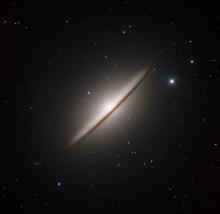Listen to today's episode of StarDate on the web the same day it airs in high-quality streaming audio without any extra ads or announcements. Choose a $8 one-month pass, or listen every day for a year for just $30.
You are here
Data Factory
Modern astronomy is a data factory. Big surveys look at thousands or millions of objects. And even bigger surveys will observe even more objects in the decades ahead. Even with all the grad students in the world, though, there’s no way to look through all of those stars, galaxies, and other objects by hand.
Astronomers are using artificial intelligence for help. Clever algorithms and lots of computing power can sift through mountains of data to ID different types of objects. And they can point out the most interesting ones for detailed follow-up.
An example is a recent project by astronomers in India. They used machine learning to sift through 277,000 objects cataloged by an X-ray space telescope.
The astronomers fed all the details into their computers. They added some observations by other telescopes in space and on the ground. They then entered details about known X-ray objects. The computer software compared the known objects to those in the catalog. That taught it how to know what was what. With its new-found knowledge, it then categorized the objects in the catalog.
It identified 33,000 galaxies with giant black holes in their hearts; 16,000 X-ray stars; five thousand newly forming stars; plus dead stars, binary systems, and other objects. Astronomers can now use those objects in their studies of the X-ray universe — new raw materials from the astronomical data factory.
More about big data tomorrow.
Script by Damond Benningfield





